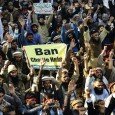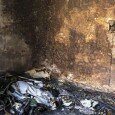By Rahimullah Yusufzai –
According to the report presented to Prime Minister, Punjab led the three smaller provinces and also the federal capital Islamabad, Fata, Azad Kashmir and Gilgit-Baltistan in context of the action taken under NAP
A report presented to Prime Minister Nawaz Sharif on March 10 listed the progress made in implementing the 20-point National Action Plan (NAP) since it was launched on December 24 last year a week after the terrorist attack on the Army Public School (APS) Peshawar to rid the country of extremism and terrorism.
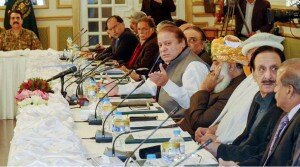 The report was timely as interest in NAP was decreasing due to the other headline-grabbing events, including the Senate elections replete with tales of horse-trading and the almost unthinkable security forces’ raid on the 90-Azizabad headquarters of the Muttahida Qaumi Movement (MQM) in Karachi. Pakistan is a happening place with so many things, mostly security-related issues, competing for attention.
The report was timely as interest in NAP was decreasing due to the other headline-grabbing events, including the Senate elections replete with tales of horse-trading and the almost unthinkable security forces’ raid on the 90-Azizabad headquarters of the Muttahida Qaumi Movement (MQM) in Karachi. Pakistan is a happening place with so many things, mostly security-related issues, competing for attention.
The regular updates presented to the Prime Minister and then made public serve to remind the public that NAP is under implementation and progress is being achieved. It is another matter that there is growing criticism about the slow pace of NAP’s implementation. Some commentators are even accusing the civil and military establishment of being insincere in executing tasks assigned to them under NAP.
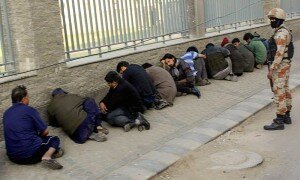 If figures presented in the latest report delivered to the Prime Minister are to be believed, these make an impressive reading. It was stated that during the 73-day period when NAP was put into operation, 24 convicted terrorists and criminals were executed and the security forces carried out 24,844 combing operations all over the country and arrested about 26,000 suspects. However, there was no mention of those found innocent and released because normally there are mass arrests during such crackdowns as the law-enforcement and security agencies apprehend a large number of people to show that they are performing well.
If figures presented in the latest report delivered to the Prime Minister are to be believed, these make an impressive reading. It was stated that during the 73-day period when NAP was put into operation, 24 convicted terrorists and criminals were executed and the security forces carried out 24,844 combing operations all over the country and arrested about 26,000 suspects. However, there was no mention of those found innocent and released because normally there are mass arrests during such crackdowns as the law-enforcement and security agencies apprehend a large number of people to show that they are performing well.
According to the report, Punjab led the three smaller provinces and also the federal capital Islamabad, Fata, Azad Kashmir and Gilgit-Baltistan in context of the action taken under NAP. It carried out more raids to go after those wanted under the law, executed 14 of the 24 convicts put to death in the country, arrested a far higher number of violators of the law on the use of loudspeakers, and registered bulk of the cases against the accused spreading hate speech and material. The Sindh government on the orders of the Supreme Court removed hate material from the school curriculum.
Punjab was ahead in terms of actionable calls made by the public to the anti-terrorism helpline as 201 calls were received in Punjab out of the 303 in the whole country. The federal and Punjab governments, headed by Prime Minister Nawaz Sharif and younger brother Shahbaz Sharif, respectively, made it a point to highlight the fact that Punjab was leading the way by aggressively implementing the NAP.
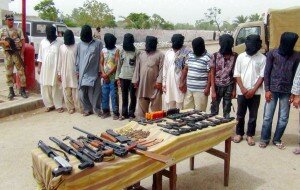 However, the federal and provincial governments are facing criticism from several retired military officers, who have turned into defence and political analysts and are believed to be representing the military’s views in the print and electronic media, for failure to efficiently implement NAP. In their view, only the armed forces are willing and capable of executing the tasks assigned to them while the ruling politicians and the civil authorities are lagging far behind in doing their job.
However, the federal and provincial governments are facing criticism from several retired military officers, who have turned into defence and political analysts and are believed to be representing the military’s views in the print and electronic media, for failure to efficiently implement NAP. In their view, only the armed forces are willing and capable of executing the tasks assigned to them while the ruling politicians and the civil authorities are lagging far behind in doing their job.
It is obvious the Nawaz Sharif government took upon itself a lot more than it could handle in terms of the 20 tasks that were to be accomplished under NAP. The Prime Minister pledged to personally monitor NAP’s implementation and gave a lot of time to it in the initial days. However, his attention is getting diverted to other pressing issues and the focus on NAP is drifting. Interior Minister Chaudhry Nisar Ali Khan was made chairman of 12 out of the 17 committees constituted to implement NAP’s 20 points, but it appears difficult for him to give the required time to the job at hand.
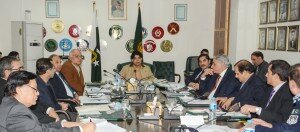 By the way, the overworked Interior Minister faced embarrassment when the Lal Masjid cleric Maulana Abdul Aziz denied his claim that he had apologized for refusing to condemn the December 16, 2014 terrorist attack on the APS. The minister during his recent visit to the US had made this statement while arguing that there was no need to arrest Maulana Aziz following his apology. The government had earlier earned criticism from the civil society activists and some progressive politicians for its inability to arrest the controversial cleric.
By the way, the overworked Interior Minister faced embarrassment when the Lal Masjid cleric Maulana Abdul Aziz denied his claim that he had apologized for refusing to condemn the December 16, 2014 terrorist attack on the APS. The minister during his recent visit to the US had made this statement while arguing that there was no need to arrest Maulana Aziz following his apology. The government had earlier earned criticism from the civil society activists and some progressive politicians for its inability to arrest the controversial cleric.
The NAP was unanimously formulated and approved by the political and military leadership and widely endorsed by the general public. Due to the rhetoric reiterating commitment of the powers that be to continue fighting until the last militant is eliminated, it raised expectations and was celebrated as the long-awaited roadmap to tackle extremism and terrorism in the country. However, the continuation of terrorist strikes and targetted kilings, some targetting Shia imambargahs to fuel sectarian strife, caused concern as many people were hoping such attacks would stop if the NAP is properly implemented. Though the terrorist attacks have considerably come down, these are unlikely to end any time soon now that the militant groups, both mainstream and breakaway, have ended their differences and come together on a single platform.
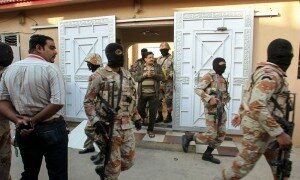 One of the major points in NAP was to tackle armed militias, but the task isn’t easy and progress has been slow. The military operations in North Waziristan and Khyber Agency also slowed down primarily due to the cold weather and snowfall in these mountainous areas. Another reason was highlighted by Jalil Abbas Jilani, Pakistan’s ambassador to the US, who said 177,000 Pakistani soldiers had to focus attention on the increased militant activity on the Durand Line border due to the withdrawal of US troops from eastern Afghanistan.
One of the major points in NAP was to tackle armed militias, but the task isn’t easy and progress has been slow. The military operations in North Waziristan and Khyber Agency also slowed down primarily due to the cold weather and snowfall in these mountainous areas. Another reason was highlighted by Jalil Abbas Jilani, Pakistan’s ambassador to the US, who said 177,000 Pakistani soldiers had to focus attention on the increased militant activity on the Durand Line border due to the withdrawal of US troops from eastern Afghanistan.
Tackling proscribed organizations, including sectarian, is proving to be a difficult task and would take time. Some retain the capacity to strike, though soft targets are being attacked due to improved security and public awareness.
Efforts are underway to restrict terrorists’ communication. The verification of SIMs of mobile phones is continuing, but it remains to be seen if this huge exercise would effectively block the militants’ communication system. The media is largely cooperating in denying space to the militant groups. However, the TTP website is still operating and propagating its cause.
A major worry is terror financing as a lot more needs to be done on this often ignored front. In the report to the Prime Minister, the Federal Investigating Agency (FIA) said 62 cases of money transfer through hawala/hundi were registered, 81 people arrested and Rs101.7 million recovered. Nine cases of suspicious bank transactions were registered and 17 suspects apprehended. It would be interesting to follow these cases as the money-laundering laws have been strengthened.
The main anti-terrorism body, NACTA, continues to lack resources and trained manpower. Establishing counter-terrorism force is taking time. Other reforms proposed in NAP, including integrating FATA, pursuing reconciliation in Balochistan and stabilizing Karachi are long-term projects needing political will and resources.
The NAP had also recommended review of policies on the 1.7 million registered and more than a million unregistered Afghan refugees, but the police crackdown against the latter caused a diplomatic row when the Afghan government protested the arrest of its three diplomats in Peshawar and expressed annoyance at the harassment of the refugees. It soon emerged that the issue would have to be tackled sensibly so as not to offend Afghanistan and damage the improving Islamabad-Kabul relations and cooperation for fighting militancy and terrorism.
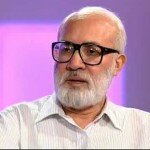 The writer is a renowned journalist and security analyst based in Peshawar
The writer is a renowned journalist and security analyst based in Peshawar


























































































